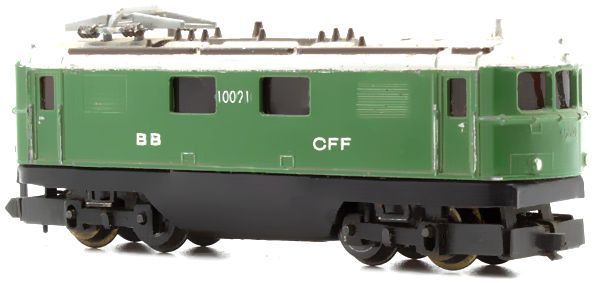Sidebar: Model versus Toy
Some debate has rumbled for quite a long time about what constitutes a model as compared to what constitutes a toy. In the grand scheme of things, they're one and the same, but to those in the hobby, they're starkly different. In truth, there's no hard delineation; instead, it's a continuum, with examples that run the full gamut.
Toys
Residing at one end of the spectrum, toys can be relatively easy to identify because they look nothing like anything in real life; instead, they're simply fanciful caricatures that can be identified generically as trains, such as this loco from Steiger's 1:140 Mignon line, circa 1947—complete with "smoke"!

Models
At the other end of the spectrum are models that constitute faithful representations of specific real-life counterparts—in a few cases down to a range of dates in the life of that specimen. Some of these products may be surprising given who manufactured them; but perhaps much more surprising is that some "true models" in N Scale date from the 1920s; thus the progression from toy to model is not necessarily time-dependant.


Transition Products
In between the two extremes are products that represent attempts by manufacturers to portray real-life objects while lacking the fidelity to be defined as models. This portion of the range can arguably contain the greatest number of products, since the vast majority of model trains are "wrong" to some degree. However, it can also be argued that some "hardcore" modelers too often split hairs excessively, failing to acknowledge commercial manufacturing limitations, as well as a company's intent to make models as opposed to toys.

